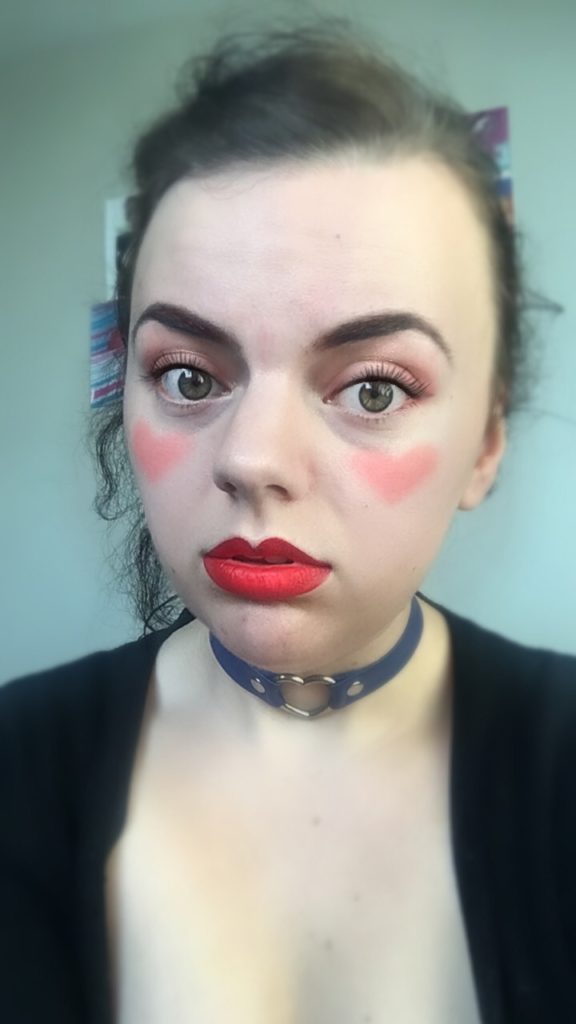 There are many forms of “objectification play” that I’ve experimented with, and the older I get, the more I seem to enjoy this kink.
There are many forms of “objectification play” that I’ve experimented with, and the older I get, the more I seem to enjoy this kink.
There’s the version where I’m a literal object, usually a piece of furniture like a footstool or drink-holder, performing a functional service that may not appear outwardly sexual but can feel very sexual on the inside.
There’s the version where I pretend to be a doll – either a literal, porcelain doll, or a full-grown adult who’s been transformed via hypnosis or drugs into a “human sex doll” – and then get to be “used” by my “owner.”
There’s the form of objectification that most non-kinky people are familiar with, the kind that shows up in fashion magazines and in plenty of porn, wherein I’m viewed as a sexual object without agency or personhood, just a series of willing and fuckable holes.
And there are lots more ways this kink can play out that I haven’t even tried yet.
As with many kinks of mine, a lot of what appeals to me about objectification is the way it helps me reclaim and subvert shitty nonconsensual experiences I’ve had in the past. All the Tinder bros who text shit like “u up?” and “ready to be my fuk machine tonight?” All the hookups who cared more about getting off than giving pleasure. All the times I thought I meant something to my date on an emotional level – even one as simple as “I like her and like having conversations with her” – but it turns out that apparently I didn’t.
The sting of these mistreatments has eased a bit after several years, but I can still bring those feelings vibrantly to mind if I focus on those memories. Because I’ve paired that type of objectification with consent and pleasure in roleplays with trusted partners, the idea of being sexually objectified in this way is no longer quite as abhorrent to me – because I know it can be done in consensual ways.
Granted, none of the people with whom I’ve play-acted objectification actually saw me as objects; that was what allowed the play-acting to indeed feel like play and not like senseless cruelty.
As someone who writes about sex toys professionally (including, occasionally, sex dolls), I find it oddly gratifying to pretend to be a sex toy of sorts from time to time. There’s something subversive and relaxing to me about setting aside the sexual machines I’ve been writing about all day and then getting to morph into a sexual machine myself.
See, when I’m being objectified in a deeply consensual and intentional way, my mind gets to shut off. And I value that a lot, as someone whose mind is always racing with anxiety and deadlines.
But also, in my career as a sex scribe, I’ve encountered countless people who thought that my career choice was an invitation for harassment and nonconsensual sexualization. They thought that my creative interest in topics like sexual psychology and the history of the porn industry was reason enough to see me as a walking, talking sex doll who exists to spice up their boring lives.
I understand the desire to have your life overtaken by someone interesting and magical – it’s the reason “manic pixie dream girl” stories continue to get cranked out year after year. It’s also something I’ve felt myself, during long hours of swiping on Tinder late into the night, always hoping that the next swipe would conjure a life-altering force, someone so cute and charming and kind and loving that my entire daily existence would take on a different tenor just from having them around.
But as I’ve been learning in therapy, viewing other people as potential “redeemers” or “saviors” gives your power away. It strips you of the knowledge that you have the ability to make yourself happy more readily and more profoundly than any external person can. It makes you feel dependent on people you never actually needed and maybe never even really wanted.
So I’ve been on both sides of the objectification equation: I’ve been objectified (a lot), and in some ways I’ve objectified other people too, seen them as heroes or saviors or props in my life story.
This is no doubt why it feels so good to me now when I play with objectification, from either side of the D/s slash. Because it shows me the difference between the consensual and nonconsensual versions of these dynamics – and even equips me with the communication tools I need to say, “No. Stop. You’re putting me in a role I didn’t consent to, and I will not stand for that.”
This post was sponsored. As always, all writing and opinions are my own.